
Amasa Leland Stanford was an American tycoon, industrialist, politician, and the founder of Stanford University. Migrating to California from New York at the time of the Gold Rush, he became a successful merchant and wholesaler, and continued to build his business empire. He spent one two-year term as Governor of California after his election in 1861, and later eight years as a United States Senator. As president of Southern Pacific Railroad and, beginning in 1861, Central Pacific, he had tremendous power in the region and a lasting impact on California. He is widely considered a robber baron.

John Isaac Guion was an American politician from Mississippi who served as Governor in 1851.

The Bear Flag is the official flag of the U.S. state of California. The precursor of the flag was first flown during the 1846 Bear Flag Revolt and was also known as the Bear Flag.
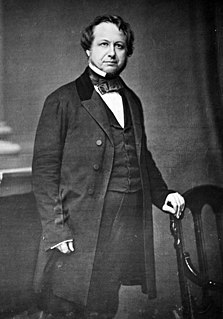
William Bigler was an American politician. A Democrat, he served as the 12th Governor of Pennsylvania from 1852 to 1855, and later a U.S. Senator for Pennsylvania from 1856 until 1861.

Wilson Shannon was a Democratic politician from Ohio and Kansas. He served as the 14th and 16th Governor of Ohio, and was the first governor of Ohio born in the state. Shannon was the second governor of the Kansas Territory.
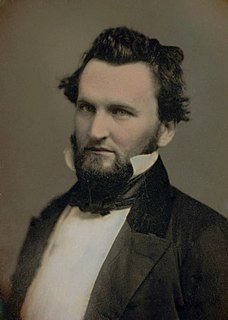
John Neely Johnson was an American lawyer and politician. He was elected as the fourth governor of California from 1856 to 1858, and later appointed justice to the Nevada Supreme Court from 1867 to 1871. As a member of the American Party, Johnson remains one of only three members of a third party to be elected to the California governorship.
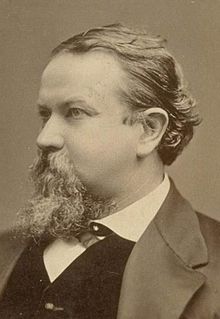
Milton Slocum Latham was an American politician, who served as the sixth governor of California and as a U.S. Representative and U.S. Senator. Latham holds the distinction of having the shortest governorship in California history, lasting for five days between January 9 and January 14, 1860. A Lecompton Democrat, Latham resigned from office after being elected by the legislature to fill the U.S. Senate seat left vacant by the death of David C. Broderick in a duel.
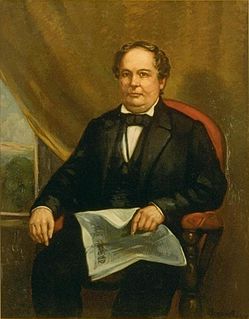
John Bigler was an American lawyer, politician and diplomat. A Democrat, he served as the third governor of California from 1852 to 1856 and was the first California governor to complete an entire term in office, as well as the first to win re-election. His younger brother, William Bigler, was elected governor of Pennsylvania during the same period. Bigler was also appointed by President James Buchanan as the U.S. Minister to Chile from 1857 to 1861.
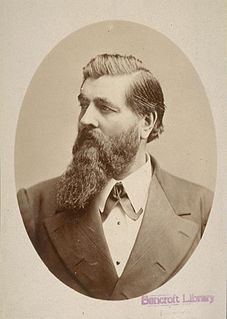
James Thompson Farley was an American politician.

Edwin Baruch Winans was a U.S. Representative from and the 22nd Governor of the US state of Michigan.

Horace Boies served as the 14th Governor of Iowa from 1890 to 1894 as a member of the United States Democratic Party. Boies was the only Democrat to serve in that position from 1855 to 1933, a period of 78 years.
José Darío Argüello (1753–1828) was a Spanish soldier, California pioneer, founder of Los Angeles, twice a Spanish colonial governor—eleventh of Alta California and then of the Baja California Peninsula—and father of Luis Antonio Argüello, first Alta California governor under independent Mexico.
José María de Echeandía (?–1871) was twice Mexican governor of Alta California from 1825 to 1831 and again from 1832 to 1833. He was the only governor of California that lived in San Diego.
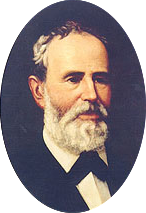
The 1855 Texas gubernatorial election was held on August 6, 1855 to elect the Governor of Texas. Incumbent Governor Elisha M. Pease was reelected to a second term, winning 57% of the vote.
Events from the year 1855 in Ireland.
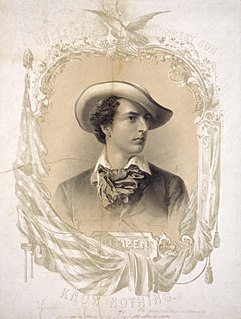
The Native American Party, renamed the American Party in 1855 and commonly known as the Know Nothing movement, was an American nativist political party that operated nationally in the mid-1850s. It was primarily anti-Catholic, xenophobic, and hostile to immigration, starting originally as a secret society. The movement briefly emerged as a major political party in the form of the American Party. Adherents to the movement were to reply "I know nothing" when asked about its specifics by outsiders, thus providing the group with its common name.

The 1859 California gubernatorial election was held on September 7, 1859 to elect the governor of California.
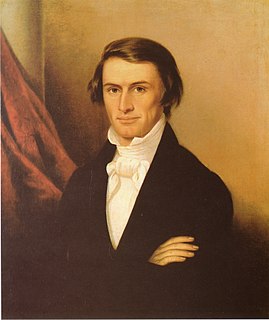
The 1855 Virginia gubernatorial election was held on May 24, 1855 to elect the governor of Virginia.

The 1855 Alabama gubernatorial election took place on August 6, 1855 in order to elect the Governor of Alabama. Democrat John A. Winston won his second term as Governor.


















